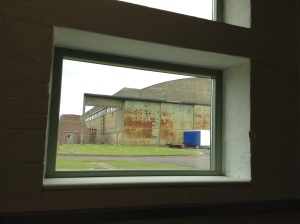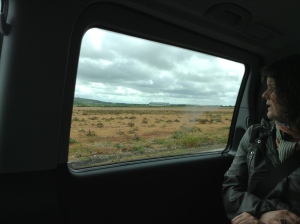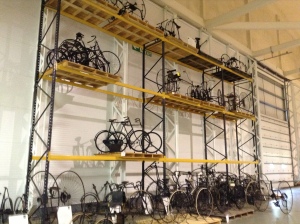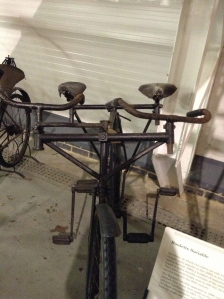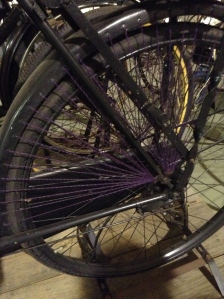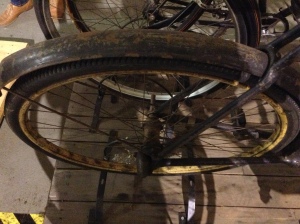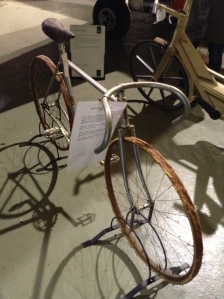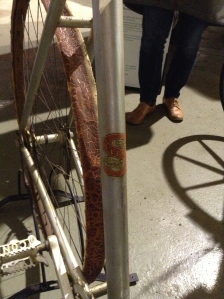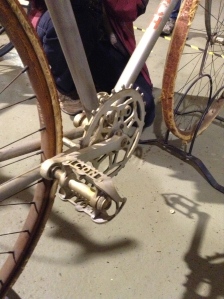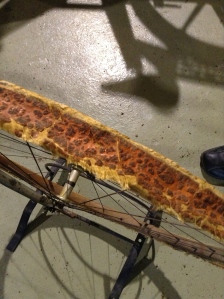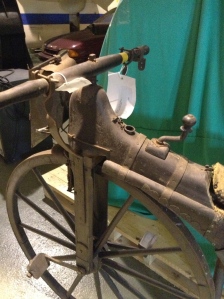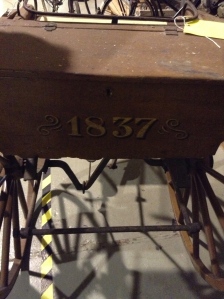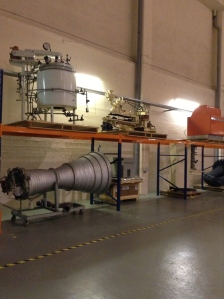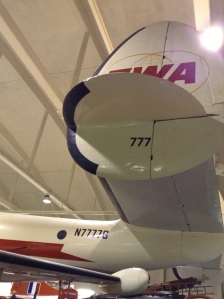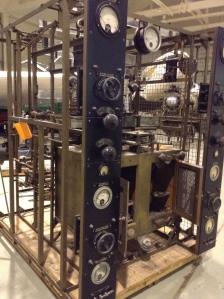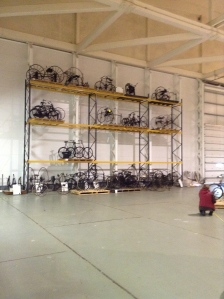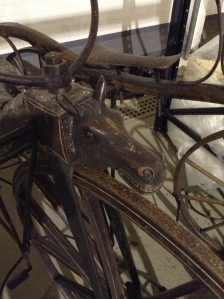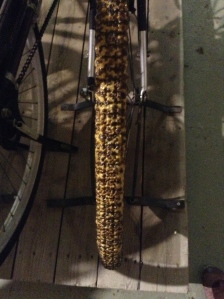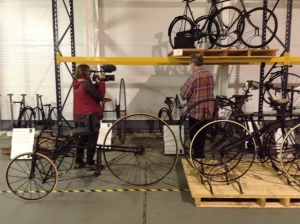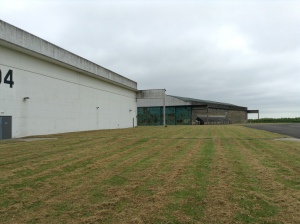This is the third and final of my posts about my trip to The Science Museum’s archives as part of the Clapham Film Units life of the bicycle Project
In which i will explore the final space we visited, after crossing the base by taxi we headed to a much larger hanger filled with more bikes most of which are not suitable to display
This was the sight we were greeted with (squeak!)
This monster is a Roulette Sociable
On a Sociables riders sit side by side, these became became popular in the 1880’s in tricycle form and in the 1890’s a number of manufactuers began to make sociable versions of the safety bicycle, like this one. The sign tells me they were surprisingly easy to ride, but we had our doubts, wondering if having two riders of different heights and weights would affect the ride. I later found this short film which answers that question.
I also found another very colorful skirt guard, in a wall of dark colours this looked quite daring!
Dennis pointed out this bike with a drive shaft. A drive shaft is used instead of a chain to transmit power from the pedals to the wheel. they were were introduced in 1890, but were mostly replaced by chain-driven bicycles due to the gear ranges possible with sprockets and derailleurs.
I was not greatly surprised by this bike as my husband has one. Due to advancements in internal gear technology, modern shaft-driven bicycles have been introduced. this is ours
http://www.biomega.dk/biomega.aspx
Everyone who sees him on it has to stop and talk to him about it!
This really is a beautiful bicycle, although this racer is from 1928 it still looks modern and is so well made
This is a Selbach. Maurice Selbach (the man) had his greatest successes in cycle racing in the early 1920s, setting lots of records, this encouraged him to set up business as a cycle manufacturer in 1924. He was an innovative engineer and pioneered the used of taper tubes in frame construction and was amongst the first to use roller bearings for both the bottom bracket and headsets of his frames. Maurice Selbach evolved many ideas relating to modern lightweight bicycle design.
Look at the beautiful attention to detail (and branding) on the cogs and pedals. He died in 1935 after train lines caused him to fall from his bike under a truck.
we had a long discussion about what these tires are made from. Bicycle tire casing is made of cloth, usually nylon, though cotton and silk have also been used. My textile background helped me recognise these as silk. The casing provides the resistance against stretching which is needed to contain the internal air pressure while still remaining flexible enough to contour to the ground surface. The thread count of the cloth affects the weight and performance of the tire, and high thread counts are generally preferred. The dense weave of this silk casing is clearly shown here, were the Rubber tread has worn and rotted away revealing the silk case, which has also disintegrating shown the broken silk fibres.
I took a picture of this machine as I thought it was quite Steam Punk, I have no idea what it is or how it works, or more importantly what that handles for? do let me know if you do!
This is the back of a Victorian post office tricycle, sadly you see less and less cycling post-people. When my husband temped as a post-man, cycling was his favorite bit of the job, heavy on the way out and almost impossible up hills, the journey back was much lighter!
After exploring the bikes for some time we misbehaved a little and wondered off to have a quick look at the rest of the collection…
Really, look at this cool “stuff” how could you not?
They had whole planes, lots of cars and this beast, and of course we had to take a little peak in the back…
although it looked untouched the only thing in the back was seats
no idea what is this, but its pretty cool
This picture has a Charlotte filming in it for scale 🙂
This early bike has a horses head on the front which seems quite strange, till you discover that early bikes were often made by blacksmiths
I became fascinated by the different types and stages of rotting rubber and yes this is as disgusting and sticky as it looks, sadly this happens to all natural rubber which is a conservators nightmare
Even Dennis didn’t get out of being filmed, here he is telling Charlotte about this favorite bike in the collection
The hanger was huge, you could be in there forever, but we had to head back to London and real world!
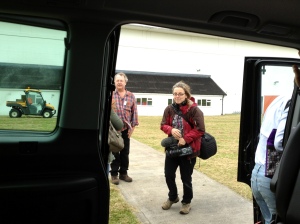
A big thank you to Anna Watson for letting me use the picture at the top of the page, see more of Anna’s pictures on her flicker page, including more on the The Life of the Bicycle Film project:
http://www.flickr.com/photos/annawatsonprophoto/sets/72157634178589895/
Find out more about the HLF funded Life of the Bicycle project:

